How to Partition Hard Drive Disk without Formatting
The methods on this page can be applied to partition hard drive in Windows 10/8.1/8/7, Windows XP/Vista.
PAGE CONTENT:
- Partition hard drive without formatting using Qiling partition manager
- Partition hard drive with Disk Management
Why Need Partition Hard Drive
Disk partitioning is a process of dividing a hard drive into several partitions - managing the hard disk drive by shrinking, extending, deleting, creating partitions and change partition size, label, even location, etc. Why do we need to partition a hard drive? Here are the common reasons to partition a new/existing hard drive:
- The change of computer users needs.
- Operating System update.
- To make full use of hard drive space, splitting it into several partitions.
- The changes in computer and hard drive usage.
Hard drive partitions first being prepared for saving data, games, system, etc., normally, will be resized, moved, split, merged or created into new partitions in a new format or new size in Windows 10/8/7 or dual boot system.
Partition a new hard drive: If you buy a new hard drive and want to partition it, you need to initialize it before using it. Then follow the step-by-step tutorial to split it up.
Partition an existing hard drive: You'll need to resize/move disk space for drive partition.
But to partition a hard drive without formatting it is very important for some specific purposes. How to partition hard drive disk without formatting it? Here, both Disk Management and third-party partition manager software can work.
Solution 1: Partition hard drive without formatting using Qiling partition manager
Professional partition manager software - Qiling Partition Master can partition a hard drive with its advanced partition operations on your hard drive without formatting it, including resize and move partitions, convert partition, split partition, merge partitions, resize dynamic disk, etc.
Moreover, Qiling Partition Master can extend or resize partition when there is no unallocated space behind it that Disk Management can't.
See how to partition a hard drive without formatting with Qiling Partition Master on your own:
How to partition a new hard drive
Step 1. Open Qiling Partition Master. Connect the hard drive or SSD to PC.
Select the target HDD or SSD and click "Create" accordingly.
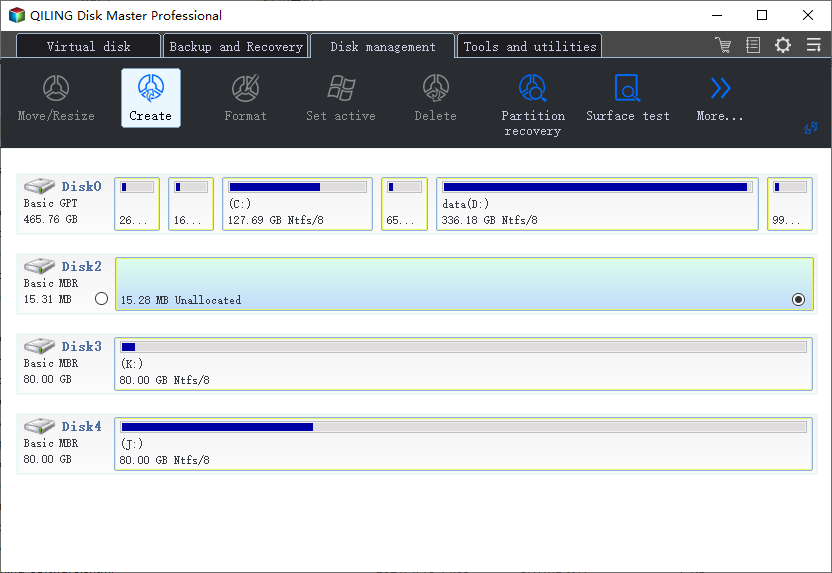
Step 2. In the next window, enter the Partition label, choose the MBR or GPT disk type, and set the cluster size according to your needs, then click "Proceed".
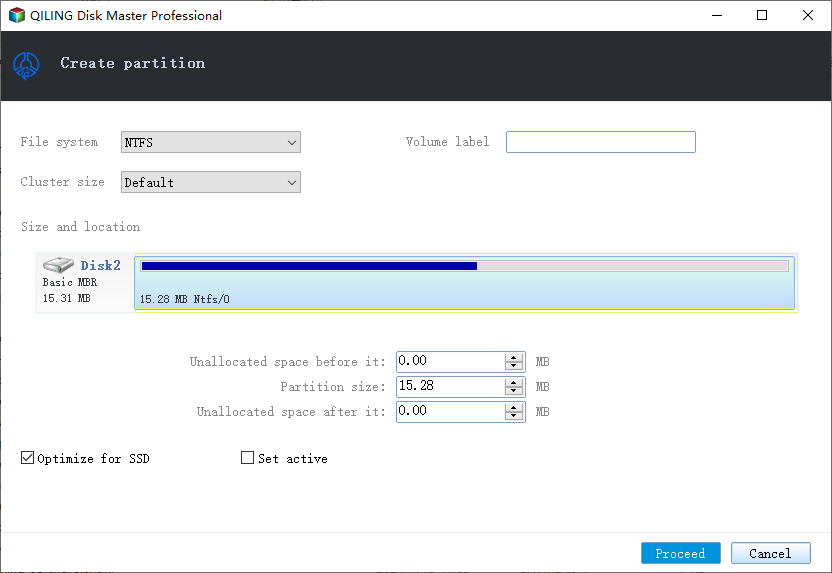
After the initialization, So the next step is to partition hard drive in Windows 10.
How to partition an existing hard drive
Step 1. Locate the Target Partition
To start extending partition, you should first locate the target partition and click "Resize/Move".
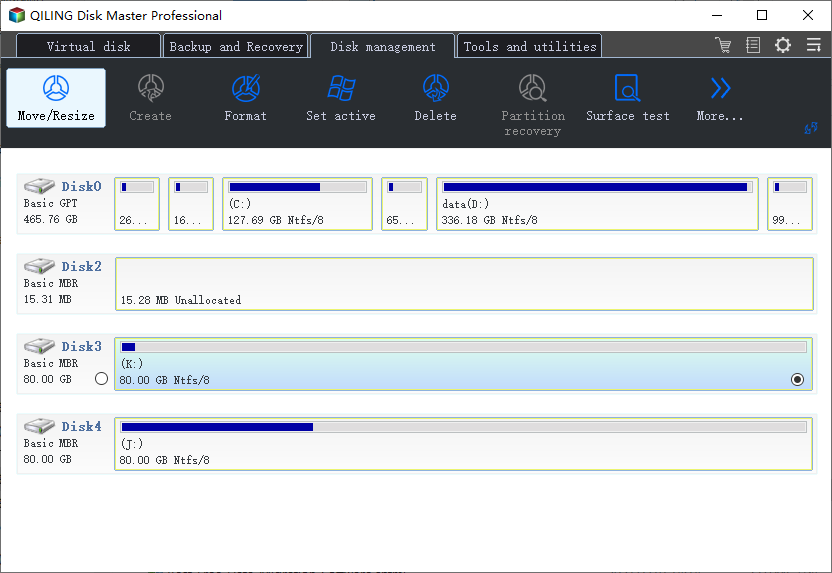
Step 2. Extend the Target Partition
Drag the partition panel rightward or leftward to add unallocated space into your current partition and click "Proceed".
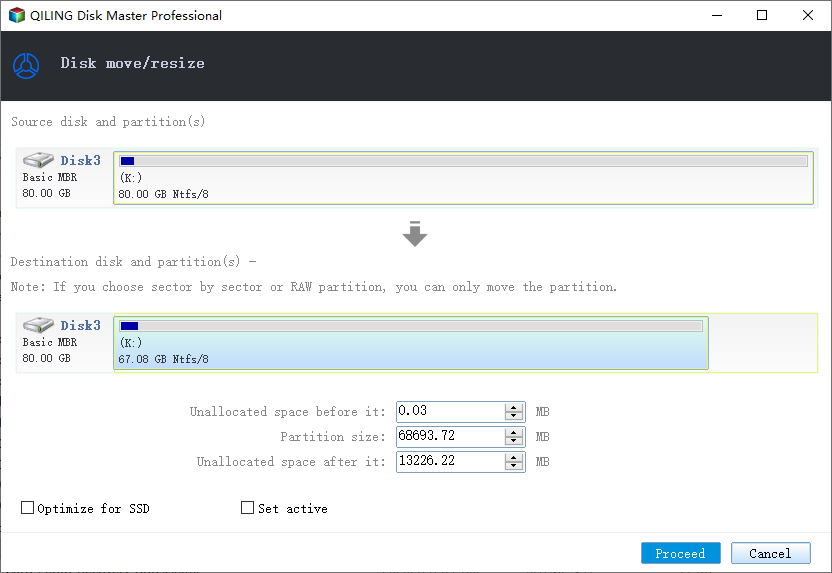
Extra Option: Get Space from Another Drive
If there is not enough unallocated space on your disk, select a big partition with enough free space, and click "Resize/Move".
Then select the target partition that you want to extend at the allocate space to column.
In addition, you can also apply some advanced features as listed below to manage your hard drive in all Windows OS:
- Extend or resize system partition
- Recover lost or deleted partition
- Convert MBR to GPT or GPT to MBR
- Migrate OS to SSD/HDD
- Optimize SSD/HDD performance
If you think this hard drive partitioning software is useful, why not apply it to manage different Windows OS partition problems with ease.
Solution 2: Partition hard drive with Disk Management
Before you start partition hard drive with Disk Management, you should first understand that it has different features in different Windows OS.
- In Windows 10/8/7, Vista and Windows Server 2008, Disk Management can shrink volume, extend volume, shrink volume, create volume, delete the volume, format volume, etc. on a hard drive.
- In Windows 2000/XP and Windows Server 2003, Disk Management can only create a partition, delete partition, format partition, change the drive letter on a hard drive.
Notice:
Disk Management can't partition a hard drive when there is no unallocated space right behind it. But Qiling Partition Manager can do it.
So how to partition hard drive with Disk Management? Let's see:
How to partition a new hard drive
Step 1: Open Disk Management
Right-click on This PC/My Computer > Click "Manage" > Enter Device Manager and click "Disk Management".
Step 2: Initialize the new hard drive
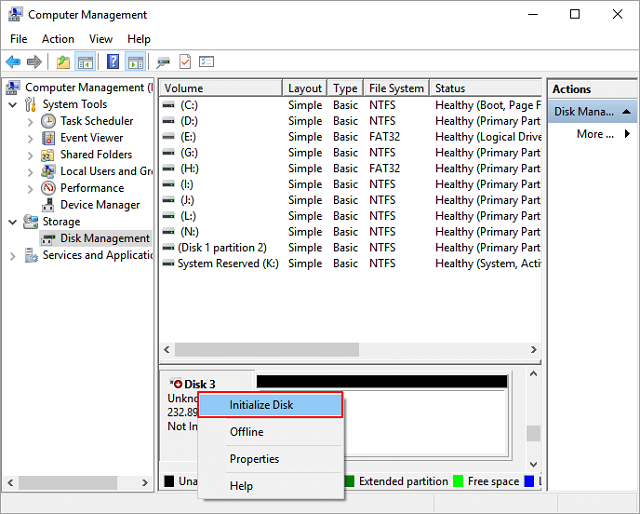
Step 3. Right-click on the unallocated space and select "New Simple Volume" to create a new partition.
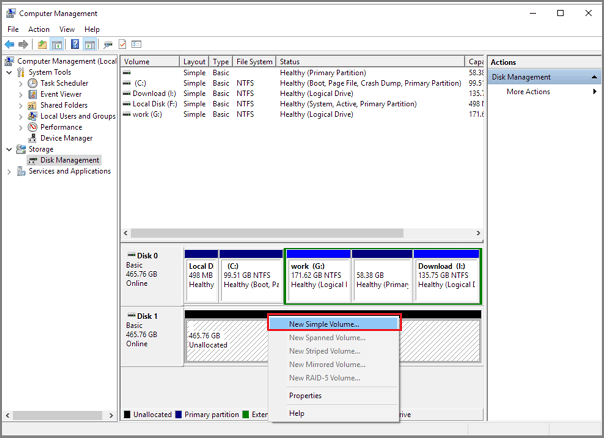
You'll then enter the New Simple Volume Wizard to choose the volume size, drive letter, and file system.
How to partition an existing hard drive
Step 1: Open Disk Management
Right-click on This PC/My Computer > Click "Manage" > Enter Device Manager and click "Disk Management".
Step 2: Partition hard drive
Shrink partition:
1. Right-click on the partition that you want to shrink and select "Shrink Volume".
2. Adjust the partition size and "Shrink" to confirm.
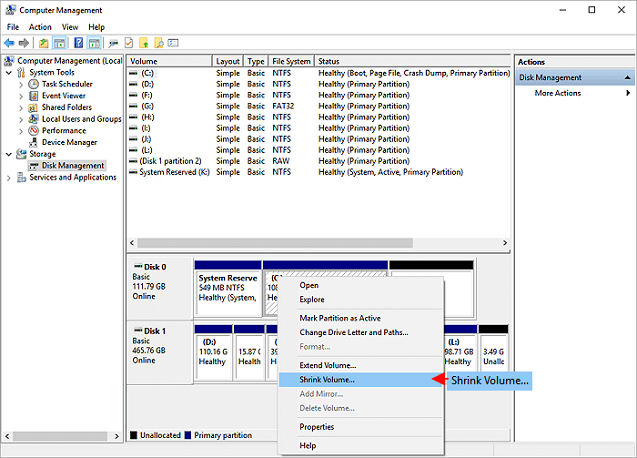
Extend partition:
1. Shrink partition next to the target partition that you want to extend in advance.
2. Right-click on the target partition and select "Extend Volume".
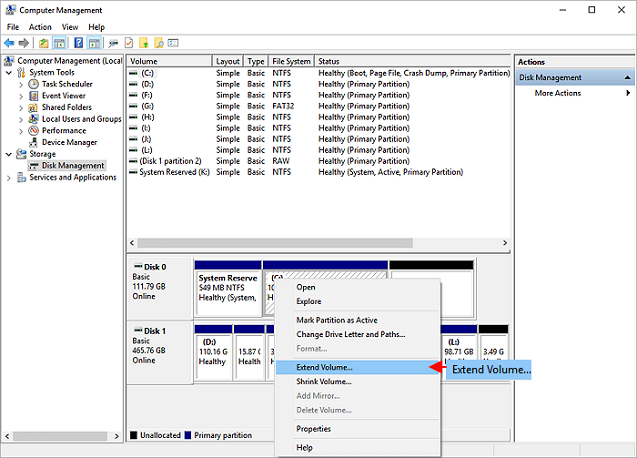
3. Click "Next" to continue, add the unallocated space to extend the target partition. Click "Next" and "Finish" to complete.
Create partition: (formatting required)
1. Right-click on the unallocated space, select "New Simple Volume".
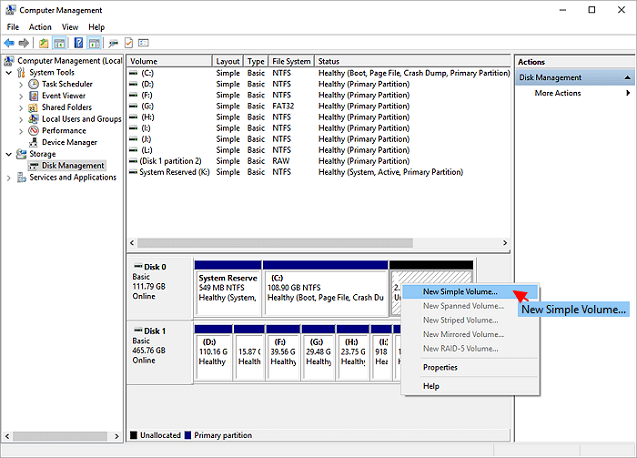
2. Click "Next" to continue, set the new partition size, drive letter, file system, click "Finish".
Wait for the formatting complete.
Delete partition:
Right-click on the partition that you want to delete, select "Delete Volume" and select "Yes".
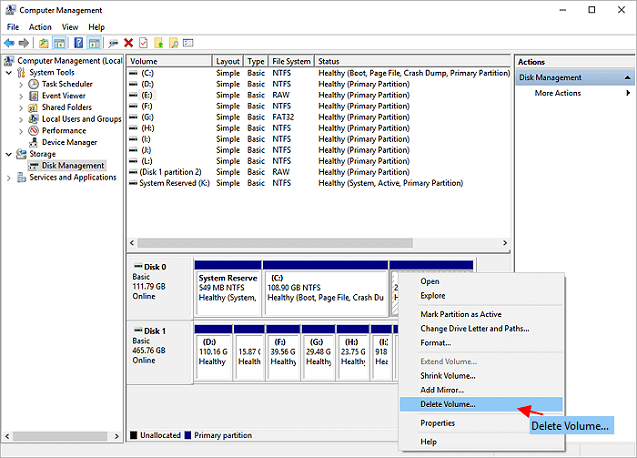
Change drive letter:
1. Right-click on the partition and select "Change Drive Letter and Paths".
2. Click "Change" to set a new drive letter for your partition.
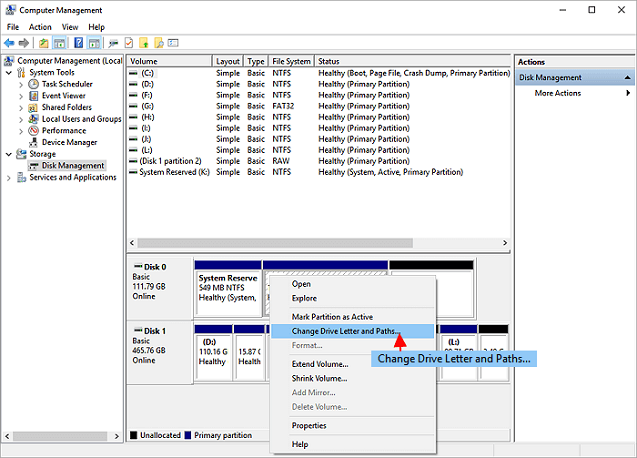
Although, Disk Management is capable of dealing with most simple partition management tasks. It still has cons to solve some complex problems that you'll need a third-party partition manager like Qiling Partition Master for help:
1.It can't re-partition hard drive especially create a new partition without formatting.
2.It can't extend system partition when the unallocated space is not behind the system partition.
3.It has no "Move Partition" feature to move the unallocated space next to the volume which you want to extend.
4.It can't convert disk to MBR/GPT.
5.It can't convert Dynamic disk to Basic disk.
In all situations, a third-party partition manager software is highly required since Disk Management has so many limitations when partitioning a hard drive. Qiling Partition Master can always be your best choice.
The Bottom Line
This article focuses on how to partition a hard drive without formatting via Qiling Partition Manager and Disk Management. For partition a new or existing hard drive, the third-party software provides more convenience than Disk Management.
Related Articles
- What Is GPT Disk and How to Manage GPT Disk
- Two Easy Ways to Wipe Data from Hard Drive in Windows 11/10
- Solution: How to Securely Wipe Free Space on SSD
- Clone Hard Drive with Paid/Free Cloning Software Windows 10